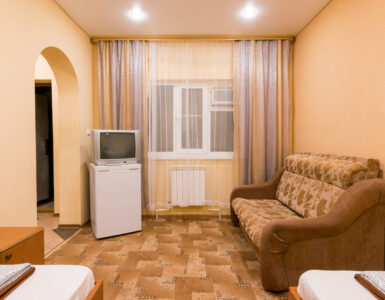Like any other valuable home appliance, air conditioners require periodic maintenance and care to work efficiently. However, a significant number of households don’t know much about how they operate.
Families should be aware of common practices to keep their air conditioner units running at maximum efficiency. In this article, we talk about eight things people need to know about air conditioning. These suggestions will help homeowners extend the life of their air conditioning devices while saving money on utility bills.
Changing Filters
Clean filters make air conditioners work more efficiently. Removing dirty filters is a task that must be performed periodically to maintain the air conditioner in good shape. Some filters can be washed and reused several times before being replaced. During the cooling season, replacing the filter once a month is good practice. Some families may consider a longer period to reduce the economic cost.
Filters come in different types. They are categorized according to the MERV or minimum efficiency reporting value. This number, which goes from 1 to 12 for filters designed to be used in home units, determines the quality of the filter. High-numbered filters provide better filtration, but at the expense of increased energy consumption. Choose the filter that provides a better balance between quality and energy costs.
Fixing Leaks
Leaks are a common problem in most home air conditioner installations. They can be the cause of up to 30% lost airflow when not properly addressed. Though most window AC units are known for their proficiency to leak, there are several workarounds households can use. To find leaks, most families rely on the “smoke trick,” which consists of lightening up incense and holding it where the window frame makes contact with the AC unit. They can also check for leaks at the central AC by holding the stick close to duct connections. In either case, if smoke is blown away, there is a leak.
Simple leaks can be fixed without much trouble. Small leaks can be patched with foil tape, whereas larger ones are easily closed with duct mastic. Families who have a window AC unit, stuffing foam between the unit and the window frame is a good solution, though some taping might be required to keep it in position. If the leak is more severe, call for service. Households who have contracted a home warranty can ask their providers to cover the cost of a potential repair bill.
Using Timers
New air conditioners come with thermostats which can be programmed to improve energy efficiency. There is no need to keep the AC unit working at full capacity if the house is empty. Using a timer, people can program air conditioners to work at higher temperatures when they are away, reducing monthly energy costs. Older AC units may not have this feature. However, timers are available at home stores for $10 to $20.
If a timer has to be purchased, homeowners should make sure its voltage matches that of the air conditioner. Otherwise, it may not work as intended. To further save on energy costs, it is recommended to keep the air conditioner system powered on at all times. Shutting it off will increase energy usage as they will have to work harder to achieve desired temperatures. However, when going on vacation, the device must be shut down to save money.
Wrapping Ducts
Air conditioners need cooled ducts to work properly. However, some places like hot attics or small spaces may make this task quite difficult. To address this problem, households can use spray foam, batt or rigid-foam insulation to cover the ducts and keep them cooled. They should always remember to use foil tape instead of regular duct tape. In some circumstances, using foam or insulation is not a possibility. In such tight spaces, wraps like Reflectix might provide better protection against heat.
Servicing the Compressor or Condenser
The air compressor or condenser of a central air conditioner installation is typically placed outside the house. Most devices are installed near the house’s foundation, with the surrounding area clear of any obstacles impeding airflow. Some families grow bushes or build decorations around their compressors. Those who do must make sure to keep a distance of no less than 24 inches between the device and nearby objects.
Most companies recommend that compressors and condensers be installed on the north or east side of the house. This way, the machine is protected from the sun. If needed, grow bushes or trees around it to provide extra protection as long as they are at the required distance. Research has shown that, when exposed to direct sunlight, compressors work with as much as 10% less efficiency.
Maintaining your Air Conditioner
Cleaning the filters is not the only way to properly maintain an air conditioner. Dealers usually put customers on a yearly cleaning schedule to perform other maintenance tasks that are also needed to keep the unit working at full efficiency. Checkups are often done before the cooling season takes place, though customers can request an early checkup if they consider it necessary.
Some of the tasks technicians perform during a routine checkup include: inspecting and cleaning coils, adjusting or replacing malfunctioning fan belts, lubricating engines and bearings, fixing blowers, checking controls and safety measures, verifying temperatures, replacing refrigerants, and more. Filters are also often cleaned or replaced during a scheduled checkup. If an AC unit is not properly cooling the house, it may be time for a routine checkup.
Improving Airflow and Cooling
Households should always try to extend the life of their air conditioners. Protecting interior spaces from direct sunlight can help the AC unit and significantly reduce energy consumption. Running floor or ceiling fans along with the air conditioner can help with air circulation and achieve desire temperatures faster.
Closing too many doors often has a negative effect. They cause central AC units to lose balance, keeping some parts of the house cooler than others. If needed, keep the doors slightly ajar to make sure airflow is not entirely severed. Building alternative airflow routes is also good practice, though it can be expensive. Families who participate in the Low Income Home Energy Assistance Program, or LIHEAP, may be able to divert part of the funds to better weatherize their house.
Upgrading Your AC
Air conditioners don’t last forever. After several years, some units may break down beyond repair. Shopping for a good replacement can be overwhelming given the high cost of modern AC units. However, when the time comes to buy a new AC, families must consider the following: the unit’s seasonal energy-efficiency ratio or SEER. Some window units often refer to it as energy-efficiency ratio or EER. This number represents how efficiently the device uses power to cool the house. Federal and state laws require air conditioners to be of at least SEER 13 or EER 8. The higher the number, the cheaper it will be to use it.
A replacement air conditioner might be available for free if the family has an active home warranty contract. However, families must check their plan’s coverage and contact the home services company. Some states allow LIHEAP recipients to partially fund new AC units with their subsidies. If a central unit is too expensive to replace, try purchasing a cheaper window unit.
Air conditioners are costly devices. A central unit can cost as much as $4,000. Many struggling families are unable to replace a broken down AC unit. As a result, it is important to put in practice strategies that extend their lifetime and reduce energy costs.




